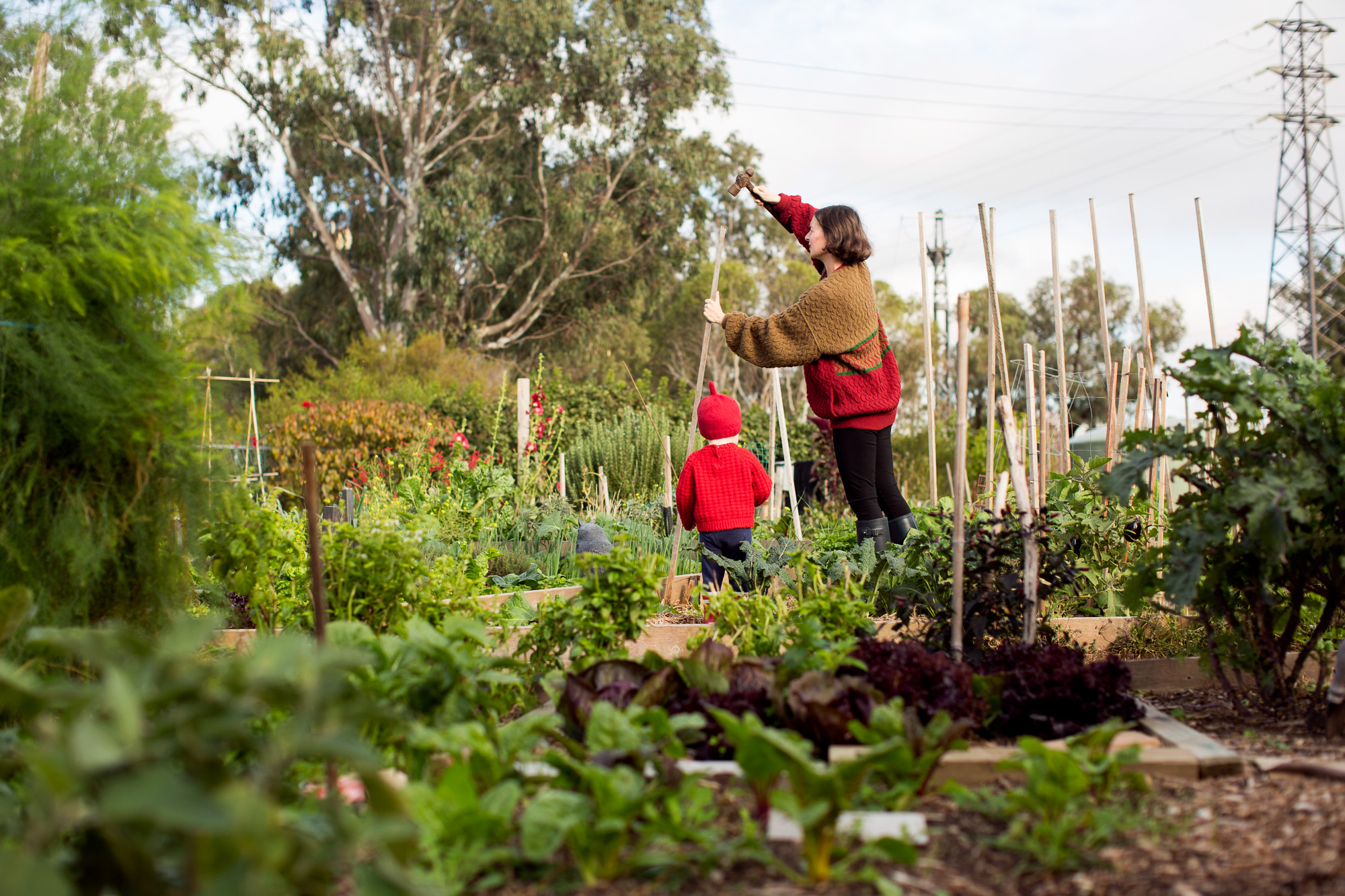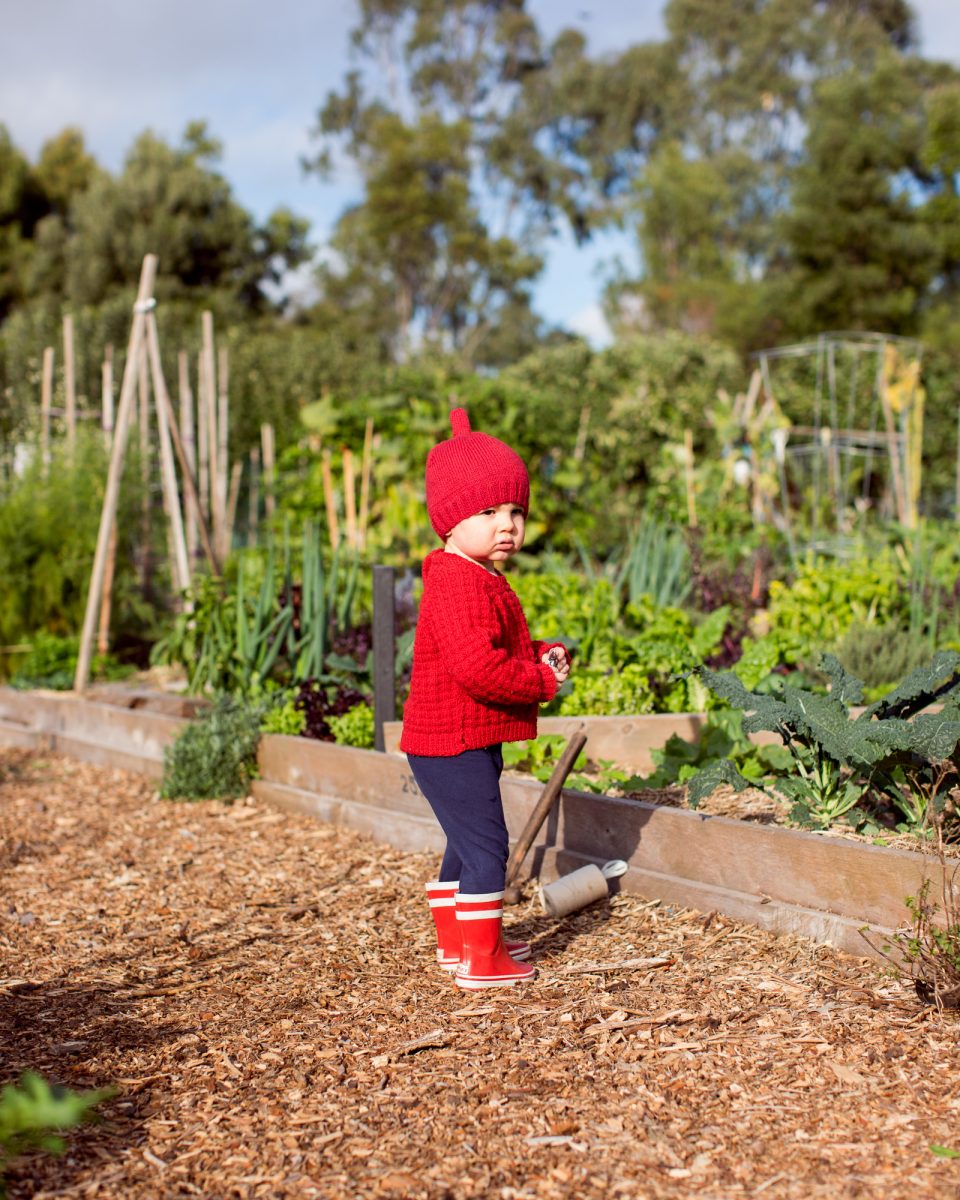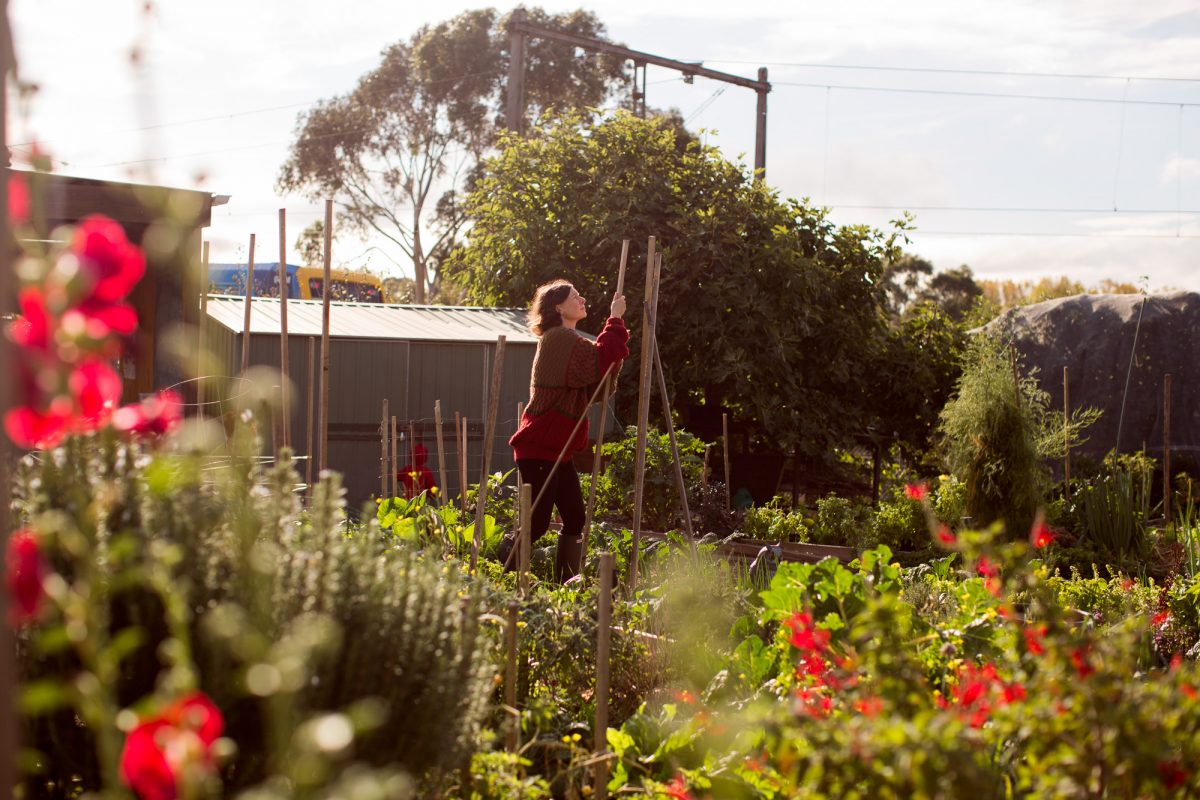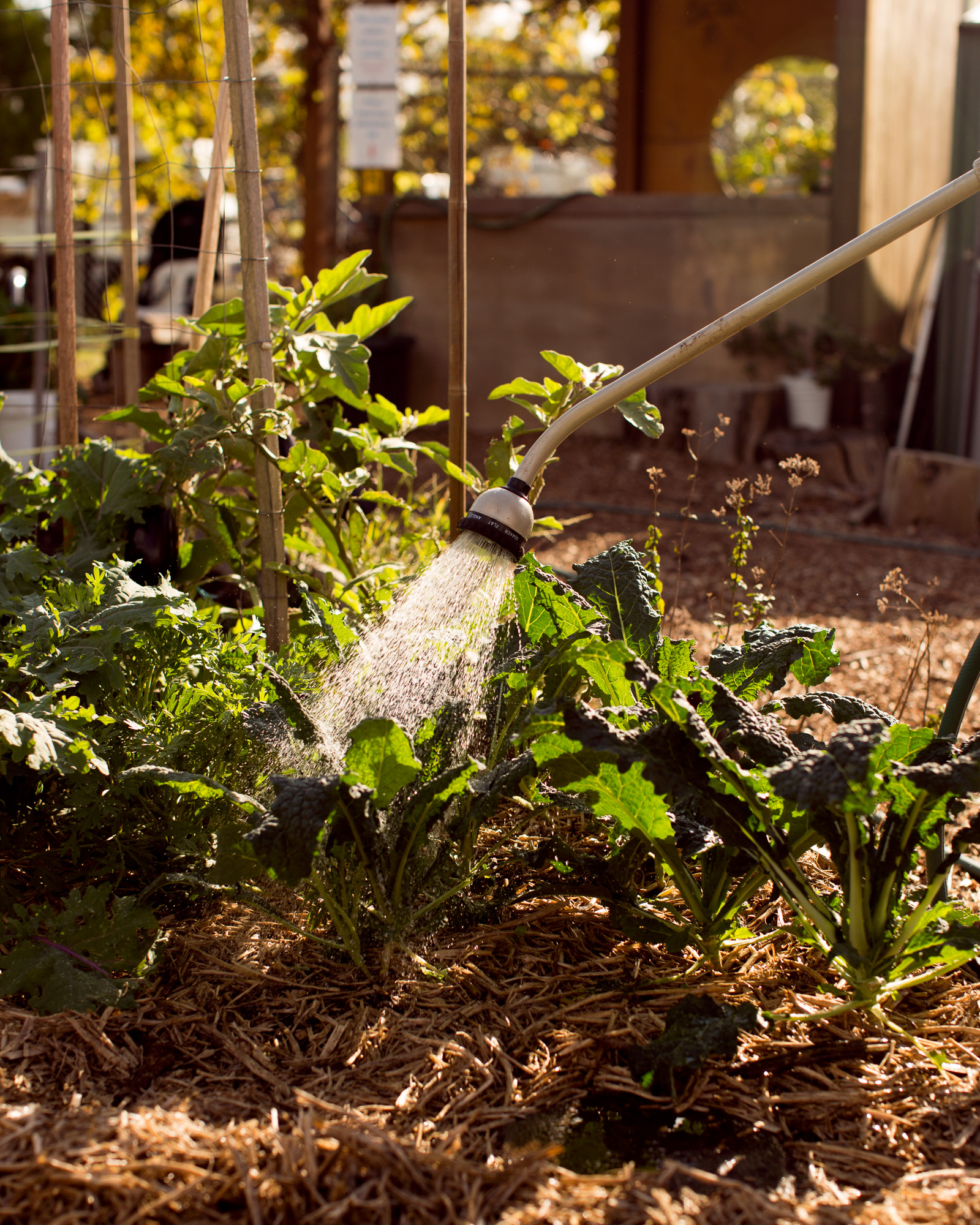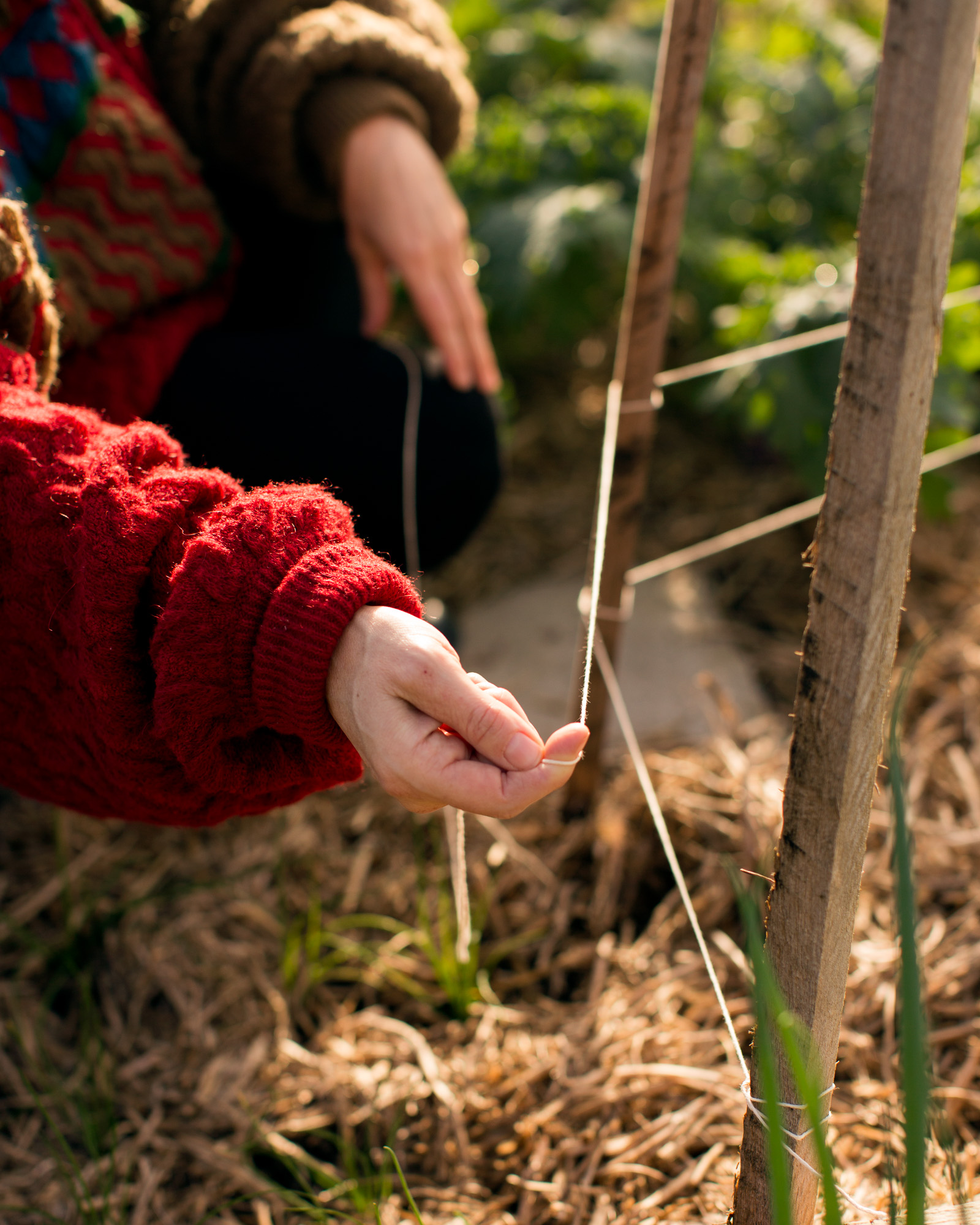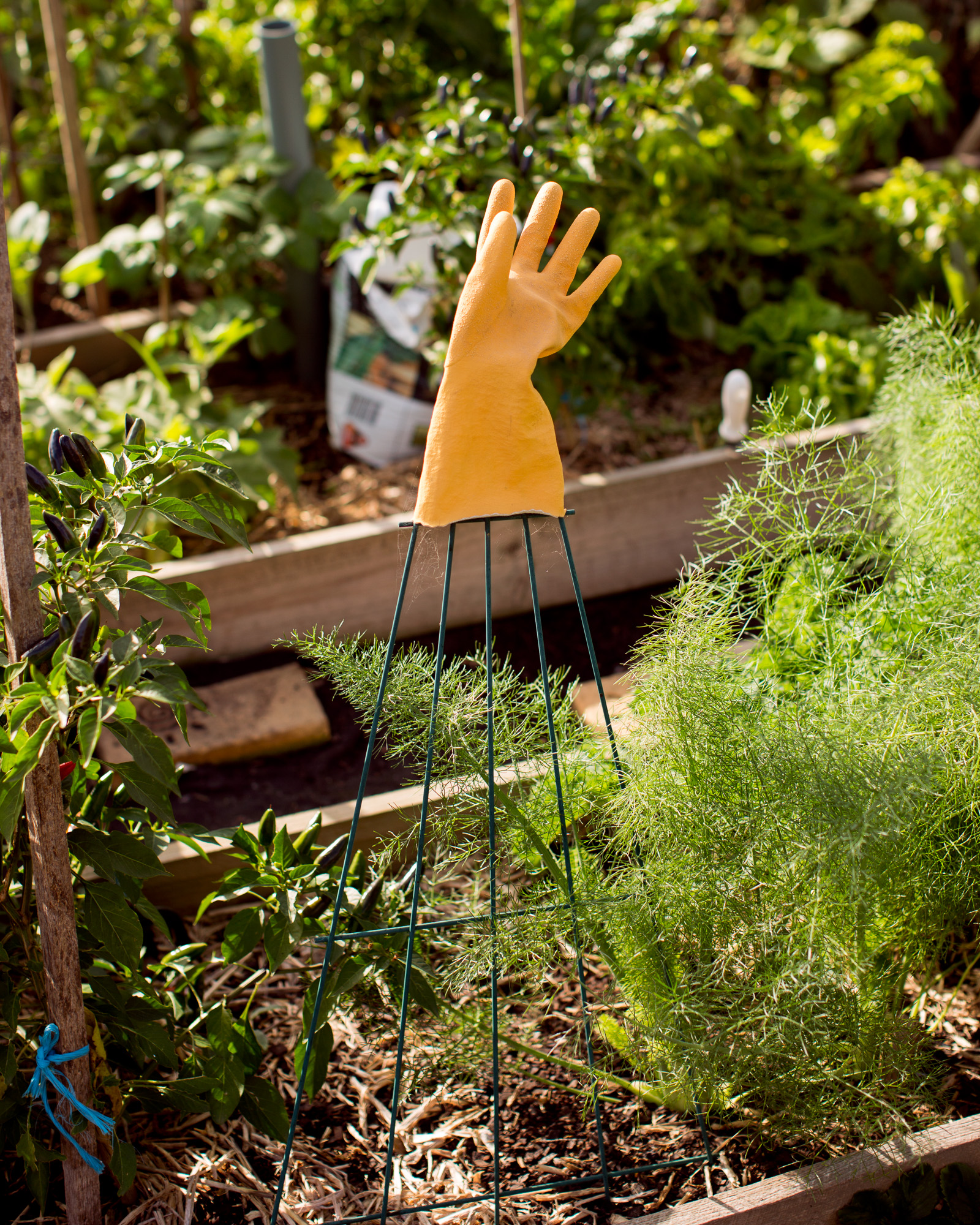Edible only: the community garden
It’s a crisp but sunny autumn morning as we meet seven-months pregnant Kate Rhodes and her two-year-old son Rem at the front gate at the North Fitzroy Community Gardens Group Rushall Garden. Dressed in cosy knits and boots, the pair pull up in a four-wheel Christiania bike, ready to harvest tonight’s dinner while giving us a tour. For most of the week, Kate is co-curator at RMIT Design Hub, a purpose-built space dedicated to design thinking across research, archiving, exhibition, conversation and critique. When not gracefully striding the halls of the glacial Sean Godsell and Peddle Thorp building, Kate observes a life cycle of a very different nature: the seasonal changes of her 8sqm kitchen garden plot.
After waiting three-and-a-half years for an in-demand patch, Kate and her husband Daniel Palmer (an academic and art historian at Monash University) have been keen members of the garden community since Rem was six months old. Prior to moving to a small terrace in North Fitzroy (members of the garden must live locally in the City of Yarra), the couple lived in a war-time, government-issue house in Williamstown, close to the bay and with a generous garden in which they grew almost all their weekly veggie intake. “We ate everything from our garden. But after a while, too many cancelled and delayed trains became tiresome, and we moved closer in. Which meant no garden, so we put our name down here. Everything seems to grow here.”
The community garden sits on reclaimed land within the Thomas Kidney reserve – much work was done to remediate the soil, which is now nutrient rich and highly conducive to Kate’s thriving kale, parsley, basil, peas, rhubarb, chard, spring onions, brussel sprouts, chives and broccoli rapini. There are 50-odd plots and all members must commit to a set number of hours on collective maintenance: regular working bees, an annual Open Day (“Dan was the official photographer this year!”), and meetings to decide on any necessary repairs and renovations. All plots use companion planting, “distraction and attraction”, as Kate says, following organic principles. “We use things like wormwood, chilli, eggshells, coffee grounds… and hygienic practices: getting rid of old, spent leaves. There’s a shared philosophy. Agreements. And no one ever sneaks a bit of ‘round up’ onto their garden!”
Kate’s community garden tips:
Hi-vis kids: “It’s a good thing to dress your kids in red because then you can see them!”
Net your fruit trees to protect from birds: “The apple trees were really productive this year. And it was very satisfying because Dan and I were part of the group that netted them. So it’s nice that our work paid off.“
Strawberries… “like to have a mound around them – that’s how they get their name of course, from the straw that protects the fruit.”
Espalier architecture: “I like seeing the structures that people grow too, for their beans… and see Paul’s pumpkins? Keeping his prize pumpkins off the ground. I also get to be a pretend architect with these structures!”
Fry together: “During our get-togethers and working bees, people generally pick stuff from the garden and fry it up. So we’ll have a sausage sizzle with BBQ eggplant and zucchini from the garden.”
Don’t rush the compost: “This is the shared compost, being very careful of your fingers [‘chop, chop, chop’] with the axe. This batch is covered with black plastic to help it break down. Keep it in there as long as possible… months”.
Planting politics: “I would never put my tomatoes on this side because I’d block the sun on [neighbouring] Ann’s plot.”
Edible only (with exceptions): “You’re not really allowed to grow flowers, everything has to be productive (unless its companion planting, such as wormwood and plants that attract bees)”.
Re-live ‘The Good Life’: “I’ve always been a keen gardener. I grew up on a hobby farm in Mildura. We had a veggie garden. My parents were probably a bit ‘Tom and Barbara’ from The Good Life [a ’70s BBC sitcom about a couple who quit the rat race in favour of a self-sufficient life]. We had horses, chickens and peacocks walking around. I collected horse manure for pocket money.”
Holidays: “If you’re away, put up a sign: ‘I’m away, please water and harvest whatever you like.”
Pay attention to the seasons: “I work to two seasons here, Mildura timing which seems to work. Tomatoes in Sept (around Grand Final time!) and then the winter crop in by Feb – in time for our Open Day so the garden is looking good in March. I try and keep a physical and mental note of where everything is, and its cycle for good crop rotation.”
Partake in garden gossip: “There is a sense of social cohesion – you learn little things about everyone through conversations in the garden. It’s miraculously harmonious.”
For more information about North Fitzroy Community Garden, visit: rushallgarden.wordpress.com. Thanks to the gracious Kate and Rem for showing us around – and for giving us some spritely silverbeet! Many local councils throughout Australia have community gardens. To find out more about how to join or start one, contact the Australian Community Gardens Network, an informal, community-based organisation linking community gardeners nationally: communitygarden.org.au
